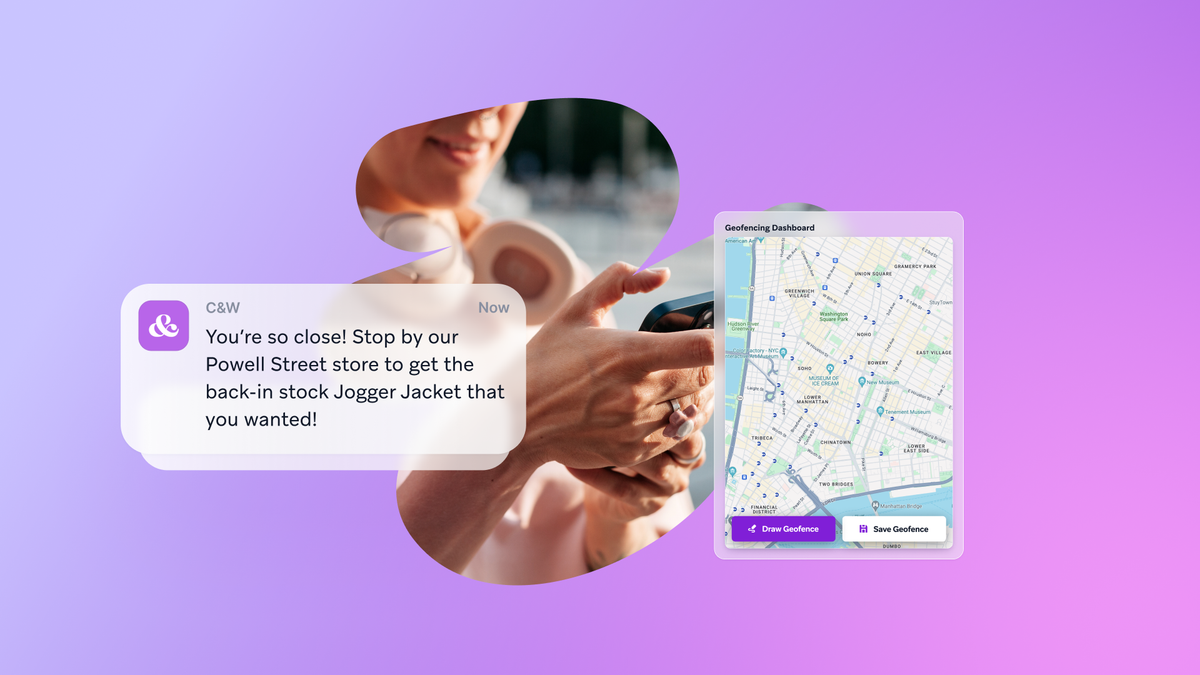Master Mobile Marketing in a Connected World, the GetYourGuide Way
Published on June 30, 2020/Last edited on June 30, 2020/9 min read


Magith Noohukhan
Product Evangelist, BrazeIt’s human nature to forge connections with others, seek out commonalities, learn about one another and ultimately build relationships based on trust and mutual understanding. So it’s not surprising that in a world where we are ever more reliant on mobile devices and digital channels, we prefer interacting with brands that engage with us in a human way by paying attention to the signals we give and then personalizing conversations to meet our needs.
But with technology evolving so quickly and such a wide range of ways to reach our audience, how can we even know where to start? That’s why I spoke to GetYourGuide’s Krzysztof Szymanski, who recognizes exactly how important it is to understand your audience and provide value to them across multiple channels—something this fast-growing travel experience booking company is particularly good at.
Our conversation offered plenty of food for thought and great examples that you can adapt to help create an impactful customer experience for your own brand.
Understand That Customer Preferences Are Ever-Changing
Just because a user has completed an exercise to create their customer avatar doesn’t mean you suddenly know that consumer inside and out.
You need to understand how they’re feeling, why they choose to buy the product you’re offering and which other products they may also be interested in. But it’s more complicated than that. You also need to understand how those preferences change over time. Travel choices, for example, can be a combination of education, situation and opportunity.
Krzysztof explains, “You have different travel preferences when you’re a single person [versus] when you start travelling with your girlfriend. And you will definitely have different [travel preferences] once you start travelling with your family.” To create a great customer experience, you need to recognise these changes and understand how they might alter what your customer wants from you. “We constantly analyze signals and try to understand, what is the best possible destination for this kind of person?” says Krzysztof. “What is the best possible activity to book in a certain destination?”
We can see a similar pattern in retail. When a couple finds out they’re about to become parents, their spending habits are likely to change. Their lifestyles and priorities will change. Marketing communications that speak to them as if they haven’t gone through a big change in circumstances will be ignored at best.
Engage With Your Customers, No Matter What
When things happen that are beyond their control, some brands take their foot off the gas because they’re unsure how to engage and end up losing control of the customer experience they’re trying to create. The COVID-19 pandemic is a great example of this, causing many brands to fumble and struggle as they tried to work out what to do.
But even though he describes COVID-19 as “an earthquake for the travel industry,” Krzysztof says GetYourGuide rose to the challenge. They quickly realised that despite being largely unable to achieve their usual conversions, they could still engage their audience by “coming up with campaigns that allowed people to still enjoy, in a way, the beauty of travelling.”
The company’s World at Home campaign offered virtual experiences such as live yoga with a teacher from Bali or cooking with an Italian chef, all from the relative comfort of lockdown. They also focused on adding value through editorial content, understanding that people were still dreaming and planning their next trips even though they couldn’t physically go anywhere.
These concerted efforts saw their open rates soar to over 30%—well above industry average—keeping them in people’s thoughts for the inevitable day when travel will resume.
Data Is the Glue That Holds It All Together
If you’re looking to create a more memorable customer experience, data must be at the core of that. Only by listening to what our customers are telling and showing us through their interactions with our brand can we effectively provide meaningful, personalized experiences. By capturing that data and learning to read it in context, we enable a customer journey that is so tailored that it feels like a one-to-one conversation.
According to Krzysztof, GetYourGuide “invests a lot of time into thinking, not only in which phase of the customer life cycle [the customer is in], but also [which phase of] the customer travel cycle. Is the customer actually in planning mode or are they already [at the] destination?” Once you know that, you can be a lot more intentional and effective when it comes to serving up types of content that are the most relevant to customers—and doing it via the right channels. This is the direction Krzysztof believes that all CRM teams should be heading.
And GetYourGuide recognised the importance of this early on. They identified that the key to their success would be understanding individual travel preferences and quickly realized that owning this process was valuable. Krzysztof explains, “We decided to keep the entire recommendation logic in-house [allowing us to] provide not only the specific activity but also try to predict what other destinations [a customer] would enjoy after they completed a trip.” He notes that GetYourGuide has achieved great outcomes by keeping tight control of this valuable data set and allowing those who know their customers best at the brand to use it to drive insights. Because they know a lot: “If you book the Eiffel tower in Paris, we know on which day exactly you will be in Paris. We could leave it there or we could say, ‘Hey, we have a detailed itinerary for how you could spend a perfect two days in Paris,’ going way beyond visiting the Eiffel Tower only. So we are thinking about producing content that is localized to all our core languages, that we could then place in the app for people to see.”
Think Cross-Channel
Don’t assume everyone will open every email you send; don’t assume push notifications will suffice as the main communication channel for every user. Be aware that customers have preferences when it comes to communication methods and these are subject to change depending on where they are in the customer journey.
“Whenever [customers] are exploring a city, whether they are in Paris, Rome or Barcelona, the engagement with our mobile programs is significantly higher than emails,” says Krzysztof. “People don’t really have the need to check their emails while they’re traveling but they are using the mobile data. So we have email, push notifications, in-app [messages] and Content Cards. We are using all four channels to increase the reach we have.”
Succeeding in this connected world is very much about building brilliant cross-channel experiences. Braze research has found sending messages in a single channel was associated with a 179% increase in engagement, compared to users who received no messages at all. However, brands that leveraged two or more messaging channels to communicate with their users saw engagement rates that were a massive 642% higher, highlighting the competitive advantage that cross-channel outreach represents for marketers.
Concentrate on Moving Customers Between Touchpoints
Many brands find that customers come in via either a website, social media channel or an app and it can be difficult to move them between touchpoints to get them to what it is you ultimately want them to do. Krzysztof explains that the majority of GetYourGuide’s customers come in through the website—so the challenge for the brand is to get them to download the app and also to use it on an ongoing basis.
The solution for GetYourGuide was a hook that gives people an additional reason to download the app: offline mobile activity vouchers. “So whenever you book something you’re able to download the offline voucher and whether or not you have internet access when you’re travelling, you’ll be able to open your ticket in the app.” He suggests this type of intentional design is a tactic many companies should think about using to drive stronger results.
Keep Customers Excited and Coming Back for More
CRM is a long game. As Krzysztof says, “The ‘R’ in CRM doesn’t stand for revenue, but relationship.” And that’s how he sees his goal, to build relationships with customers not only when they travel but all the time.
GetYourGuide does this extremely successfully by building features that boost customer engagement by finding reasons to contact their customers. “Some people call them fake transactional emails,” explains Krzysztof, “but I prefer to call them Milestone Celebrations.”
“We’re working on a booking anniversary campaign to remind people that last year at that time they were visiting New York, or London or Tokyo,” he told us. “We could do something around the fifth or tenth trip taken with GetYourGuide, or the third or fourth country visited this year. We will also be encouraging them to use our Wish List to start adding new activities or thinking about another trip they can take.”
When you think about it like that, the possibilities are endless. And looking across industries we can see countless examples of this tactic employed to encourage people to engage with a brand just that little bit more—like suggested playlists on music streaming services, ‘recommended for you’ and rolling episodes on video streaming services, even hooks built into meditation and language learning apps to inspire repetition, habit, and loyalty.
Ultimately, GetYourGuide wants to be a place where people can fully plan their time in a destination. This will include itineraries, bookings, tickets, special offers, relevant activities served up, additional content and info. And all delivered across multiple mobile channels. No wonder their customers are engaged and excited.
Final Thoughts
In today’s mobile landscape, it is critical for brands to create value through personalized, memorable conversations with their customers. By interrogating your customers’ data and diving deep into their preferences throughout their customer journey, you’ll begin to forge real human connections.
Take this a step further by encouraging people to interact with multiple touchpoints and channels, and you can truly provide consistent, valuable content that gives customers what they need, when they need it, wherever they are.
For more insights into creating brilliant customer experiences across multiple channels, check out our popular channel expansion guide, which explores effective email, mobile, web, and OTT messaging, and more.




